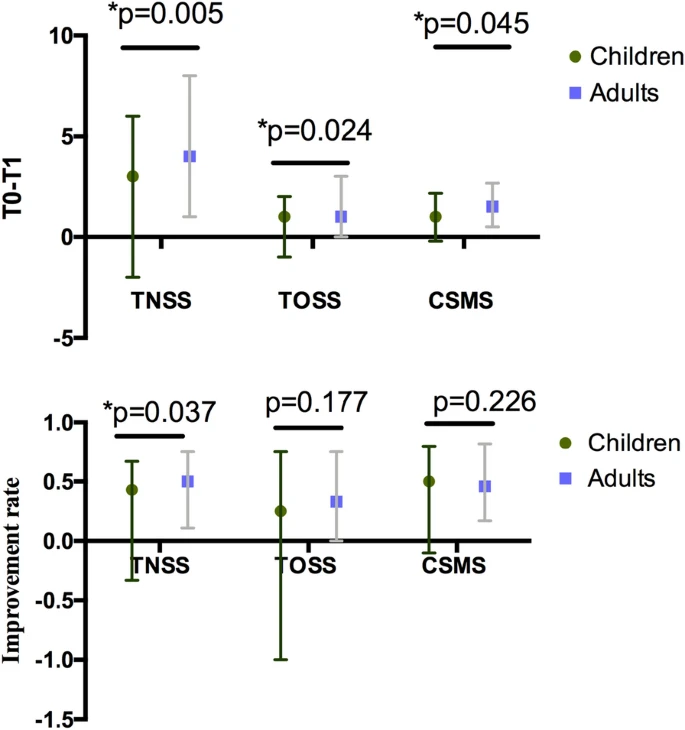Abstract
Background
Subcutaneous immunotherapy (SCIT) is a well-validated and effective disease modification treatment for house dust mites (HDM)-induced allergic rhinitis (AR). Long-term post-treatment comparisons in children and adults treated with SCIT have rarely been published. This study aimed to evaluate the long-term efficacy of HDM-SCIT administered under a cluster schedule in children compared to adults.
Methods
This was an open-design, observational, long-term clinical follow-up study on children and adults with perennial AR treated with HDM-SCIT. The follow-up consisted of a three-year treatment duration plus a post-treatment follow-up of over three years.
Results
Patients in the pediatric (n = 58) and adult (n = 103) groups completed a post-SCIT follow-up of over three years. The total nasal symptom score (TNSS), combined symptom medication score (CSMS), and rhinoconjunctivitis quality-of-life questionnaire (RQLQ) score decreased significantly at T1 (three-year SCIT completed) and T2 (follow-up completed) in the pediatric and adult groups. In both groups, the improvement rate of TNSS (T0-T1) was moderately correlated with the baseline TNSS (r = 0.681, p < 0.001 and r = 0.477, p < 0.001 for children and adults, respectively). Only in the pediatric group, TNSS was significantly lower at T2 compared with that right after SCIT cessation (T1) (p = 0.030).Conclusions
Children and adults with HDM-induced perennial AR could achieve a sustainable post-treatment efficacy for over three years (up to 13 years) following a three-year SCIT. Patients with relatively severe nasal symptoms at baseline may benefit more from SCIT. Children who have completed an adequate course of SCIT may gain further improvement in nasal symptoms after SCIT cessation.


No comments:
Post a Comment